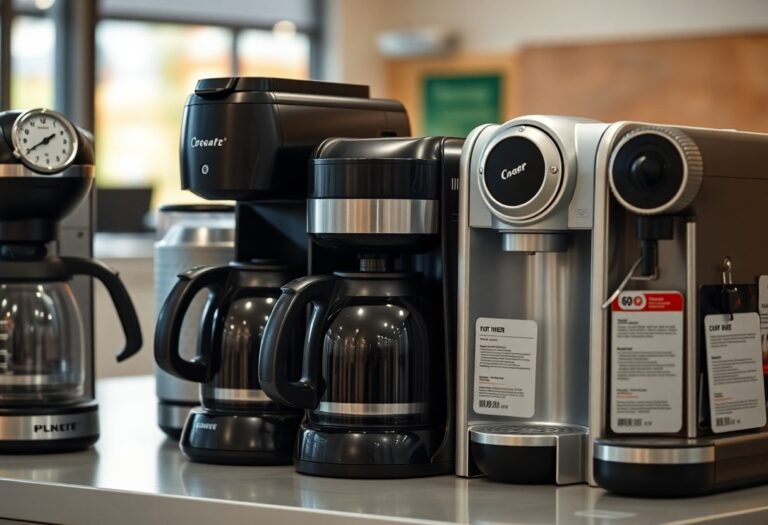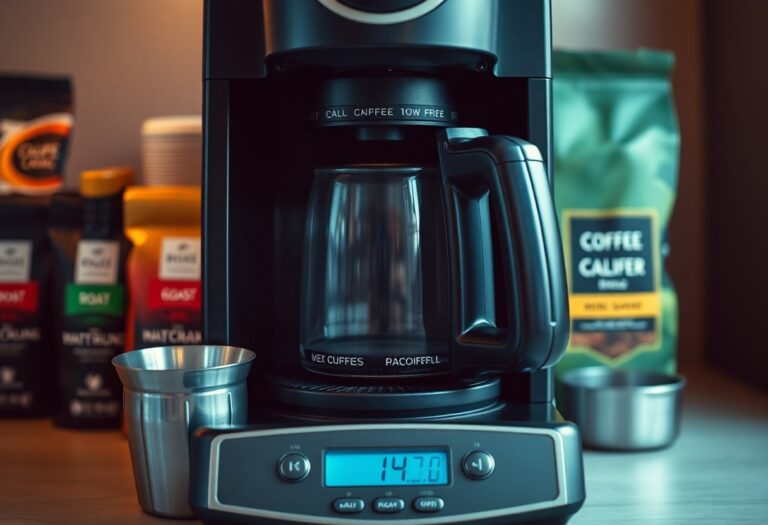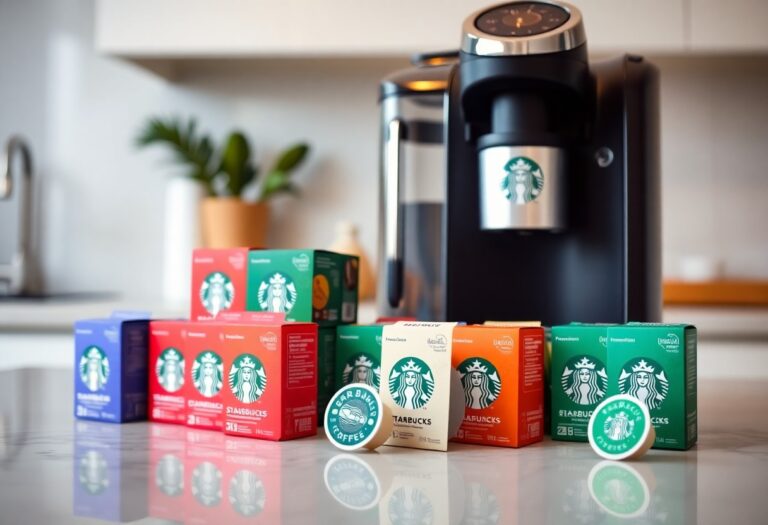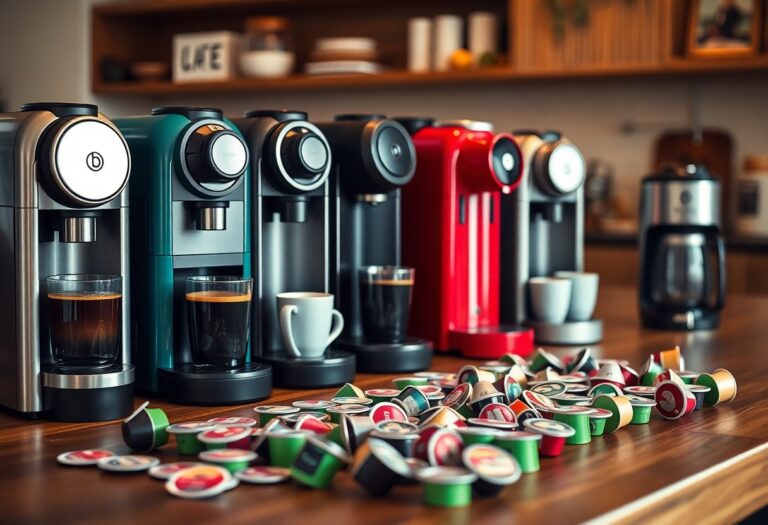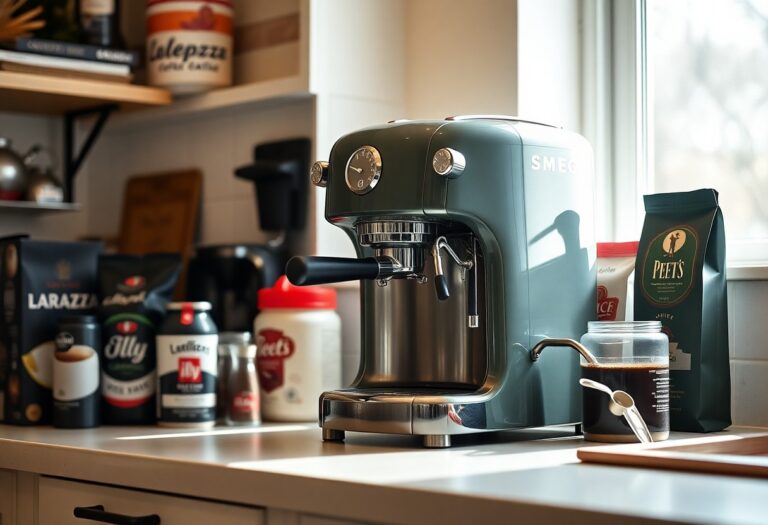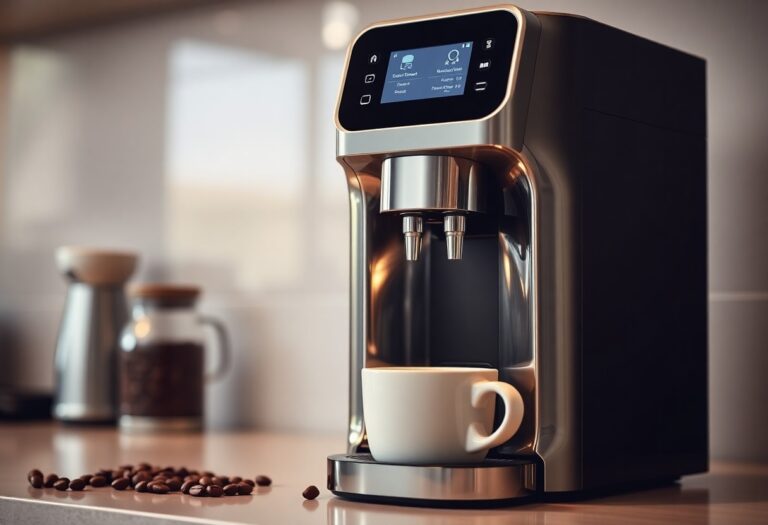How to Make Keurig Coffee Without the Machine – Alternative Brewing
You can enjoy delicious Keurig-style coffee even without the machine by using simple alternative brewing methods. Whether you’re camping, traveling, or just looking for a quick solution at home, it’s easy to replicate that rich coffee flavor. In this guide, you’ll discover various techniques to brew your favorite coffee pods without needing the expensive machine, ensuring you get your caffeine fix anytime and anywhere. With a few supplies and some basic steps, you’ll be sipping on that perfectly brewed cup in no time!
Key Takeaways:
- You can brew Keurig-style coffee using a French press, pour-over method, or other brewing techniques without the machine.
- Utilizing a coffee filter or a reusable pod can help mimic the convenience of Keurig pods.
- Opt for ground coffee that is compatible with the brewing method you choose to ensure the best flavor.
- Adjust the coffee-to-water ratio based on personal taste preferences to achieve your desired strength.
- Experimenting with different brewing times can enhance the overall flavor profile of the coffee.

The Essentials: Key Ingredients and Equipment
To successfully brew Keurig-style coffee without the machine, you’ll need to focus on two main components: the right coffee beans and the important brewing tools. Choosing high-quality ingredients and utilizing the appropriate equipment ensures you replicate that beloved Keurig flavor with greater customization and control.
Selecting the Right Coffee Beans
Your coffee choice plays a significant role in achieving the perfect brew. Opt for freshly roasted coffee beans, preferably medium to dark roast for a well-rounded flavor profile. Look for beans with a roast date on the bag, as freshness directly impacts taste. If you enjoy stronger flavors, consider trying single-origin beans known for their unique characteristics or blends that highlight depth.
Essential Tools for Brewing Without a Machine
Brewing without a Keurig machine requires some basic yet effective tools. A French press, pour-over cone, or AeroPress can replicate the brewing process, while a coffee grinder is necessary for ensuring an optimal grind size. Additionally, having a kettle for control over water temperature and a scale for measuring coffee will enhance your brewing precision.
Each tool serves a specific purpose; for instance, the French press allows for steeping, which extracts complex flavors, while the pour-over method provides delicate control over water flow for a clean taste. Investing in a quality grinder is important; a burr grinder delivers even particle sizes that enhance extraction. A digital scale will help you achieve precise coffee-to-water ratios, typically 1:15 to 1:17, perfect for brewing a rich cup comparable to the convenience of a Keurig.
Mastering Manual Brewing Methods
Exploring manual brewing methods allows you to take charge of the entire coffee-making process, ensuring each cup is tailored to your taste. From the coarseness of the grind to the water temperature, you hold all the keys to unlocking unique flavors. Each method is not only about making coffee but also experiencing a deeper connection to your beverage, transforming the mundane into a ritual of delight.
The French Press: A Classic Technique
The French press, also known as a press pot or plunger pot, is a simple yet effective way to brew rich, full-bodied coffee. By steeping coarsely ground coffee in hot water for about four minutes before pressing down the plunger, you extract aromatic oils that are often lost in other brewing methods, resulting in a more robust flavor.
Pour-Over Method: Precision and Control
Utilizing the pour-over method gives you unparalleled precision and control, enabling you to fine-tune every aspect of the brew process. The key lies in the timing, water temperature, and pour rate, all contributing to a flawless extraction that highlights the coffee’s unique flavor profile.
The pour-over technique emphasizes the relationship between your coffee and water through a slow, deliberate process that allows for optimal extraction. Using a gooseneck kettle can enhance your precision, allowing you to control the flow rate and direct hot water in circular motions, ensuring that all grounds are evenly saturated. This meticulous process helps bring out lighter notes and complexities in specialty coffees, making it an elegant choice for coffee enthusiasts alike.
Stovetop Brew: The Espresso Alternative
The stovetop brew, often made with a Moka pot, produces strong, espresso-like coffee without the need for an espresso machine. The process involves boiling water in the bottom chamber, creating steam pressure that forces water through coffee grounds in the upper chamber, resulting in a robust and intense brew in just a few minutes.
This method is perfect for those looking to indulge in a coffee experience similar to espresso without the bulky equipment. The stovetop brew delivers a dark and concentrated cup, showcasing bold flavors and a rich crema. It is also a relatively easy process, making it an appealing choice for both novices and seasoned coffee lovers. The technique is designed for versatility, allowing you to experiment with different coffee-to-water ratios to create your ideal cup.

Exploring Alternative Coffee Brewing Gadgets
With a variety of alternative coffee brewing gadgets available, you can enjoy flavorful coffee without relying on a Keurig machine. These tools bring excitement and customization into your brewing routine, allowing you to experiment with different styles and tastes. Each gadget has unique benefits that cater to your coffee preferences, making it easy for you to find the perfect fit.
The Aeropress: Versatile and Efficient
The Aeropress is a compact device that delivers a rich, smooth cup of coffee with minimal effort. Its unique design uses air pressure to extract flavors, which means you can brew coffee in under a minute. This method also allows for the use of varying grind sizes and brewing times, letting you tailor your cup to your specific taste preferences.
Cold Brew: A Refreshing Twist
Cold brew coffee is known for its smooth, mellow flavor and low acidity, making it a satisfying option for hot days. By steeping coarsely ground coffee in cold water for an extended period, typically 12 to 24 hours, you achieve a concentrated brew that you can dilute according to your taste. The result is a deliciously refreshing beverage served over ice or used as a base for other drinks.
To make cold brew, simply combine one part coffee grounds with four parts cold water in a large jar or pitcher. Let it steep in your refrigerator or at room temperature for 12 to 24 hours. After steeping, strain the mixture using a fine mesh sieve or a coffee filter to remove the grounds. You can enjoy this concentrated coffee as-is, or dilute it with cold water, milk, or a milk alternative for a perfectly balanced drink.
Siphon Brewing: The Showstopper
Siphon brewing is an elaborate, theatrical method that produces coffee with a clean, delicate flavor profile. Utilizing a two-chamber system, water is heated in the lower chamber, creating vapor pressure that pushes it into the upper chamber where it mixes with coffee grounds. Once the heat source is removed, the brewed coffee is pulled back down through a filter, resulting in an impressive and aromatic cup.
The siphon brewing process not only brings exceptional taste but also provides a unique visual experience. As the water vapor rises and the brewed coffee descends, the science behind the brewing becomes part of the entertainment. By carefully monitoring factors like water temperature and brew time, you can master this method, allowing you to showcase your barista skills while impressing friends and family with both presentation and flavor.
Elevating Your Coffee Experience
To truly enhance your coffee journey, consider personalizing your brew beyond just the basics. Using high-quality, fresh ingredients will significantly elevate your experience, both in flavor and aroma. Look for specialty beans or blends that cater to your palate, whether that’s a rich dark roast or a vibrant light roast. Additionally, explore various brewing techniques that can bring out different notes in your coffee, providing a more rounded tasting experience. Bear in mind, the beauty of manually brewed coffee lies in your ability to tailor it precisely to your preferences.
Experimenting with Flavors: Add-Ins and Milk Alternatives
Discovering new flavor combinations can make your coffee ritual more exciting. You can add spices like cinnamon or nutmeg for warmth or whip in flavored syrups for sweetness. Additionally, consider incorporating non-dairy milk options such as almond, oat, or coconut milk, which can impart unique flavors and creaminess, altering the profile of your brew entirely. Likewise, experimenting with whipped cream or flavored toppings can introduce an indulgent twist to your morning cup, making it truly your own.
Dialing In Your Brew: Adjusting for Taste Preferences
Adjusting your brew method and ratios can dramatically impact your coffee’s flavor. From altering the grind size of your beans to experimenting with steeping times, small changes can result in a significantly different brew. If your coffee tastes too bitter, try a coarser grind; conversely, a finer grind may be the solution if it’s too weak. Tinker with the water temperature and brewing time as well. These minor adjustments allow you to personalize your coffee to suit your specific taste, ensuring that every cup brings you joy.
Fine-tuning your coffee takes patience and a bit of practice, but the rewards are well worth it. For instance, adjusting the typical water-to-coffee ratio from the standard 1:16 (one gram of coffee for every 16 grams of water) can lead to surprising results. If your brew lacks richness, increasing the coffee slightly can enhance the overall flavor profile. Alternatively, if you find your coffee overwhelming, decreasing the coffee amount or increasing water will yield a milder cup. Tracking your adjustments can help you zero in on your perfect brew over time.
Troubleshooting Common Brewing Challenges
Even the most careful brewers can experience issues while trying to replicate that perfect cup. If your coffee tastes off, don’t worry—most challenges can be fixed with a few adjustments. For a deeper explore these methods, check out How to Make Coffee Without a Coffee Maker.
Managing Coffee Grind Sizes
A critical aspect of brewing is achieving the right grind size for your coffee. Coarse grounds work well for methods like French press, while medium to fine grinds are better suited for pour-over or drip methods. If your coffee tastes bitter, you may have ground your beans too finely, which can lead to over-extraction. Adjusting your grinder for coarser settings can create the desired balance of flavor.
Fixing Under or Over Extracted Brews
Fixing under or over-extracted brews often comes down to adjusting brew time or coffee-to-water ratios. If your coffee is sour and weak, it’s likely under-extracted. Increasing the brew time or using a finer grind can help. Conversely, if you’re tasting bitterness, your coffee might be over-extracted, requiring coarser grounds or shorter brew times. Experimenting with both parameters will lead you to the perfect extraction and flavor profile.
Conclusion
Following this guide, you can enjoy your favorite Keurig coffee without needing the machine. By utilizing alternative brewing methods like a French press, pour-over, or using a simple coffee maker, you can achieve rich flavors and the convenience you desire. Experiment with different techniques and coffee grounds to find the perfect brew that suits your taste. With a little creativity, you can easily replicate the Keurig experience using items you already have at home, making your coffee routine both flexible and enjoyable.
FAQ
Q: Can I make coffee using coffee grounds and hot water without a Keurig machine?
A: Yes, you can make coffee with coffee grounds and hot water without a Keurig machine. Start by boiling water and letting it cool slightly. Then, add your desired amount of coffee grounds to a heatproof container. Pour the hot water over the grounds and let it steep for about 4-5 minutes. Finally, strain the coffee into a cup using a fine mesh strainer or coffee filter for a smooth finish.
Q: What are some alternatives to using a Keurig pod for brewing coffee?
A: Instead of using a Keurig pod, you can use a reusable coffee filter or a drip coffee maker. You can also consider using a French press, pour-over coffee maker, or a stovetop espresso maker. Each method requires different techniques and tools, but all can produce a delicious cup of coffee without relying on pre-packaged pods.
Q: How do I adapt my coffee-making process when using a manual method?
A: When using a manual coffee-making method, you need to adjust the coffee-to-water ratio based on your taste preference. Generally, start with 1 to 2 tablespoons of coffee grounds per 6 ounces of water. Brew time will vary by method; for example, a French press takes around 4 minutes, while pour-over can be done in 2-3 minutes. Experiment with the grind size and brew time for optimal flavor.
Q: What tools do I need for brewing coffee without a Keurig?
A: To brew coffee without a Keurig, you will need some basic tools such as a heatproof container or a saucepan for boiling water, coffee grounds, a method for filtering (like a fine mesh strainer or a coffee filter), and a cup for serving. Depending on the brewing method you choose, you may also need a French press, pour-over dripper, or a stovetop espresso maker.
Q: Can I make iced coffee using alternative brewing methods?
A: Absolutely! To make iced coffee, brew your coffee using one of the alternative methods mentioned above, then let it cool. Once cooled, pour the coffee over a glass filled with ice and enjoy. For a stronger iced coffee, consider brewing your coffee with double the coffee grounds and adding ice to keep it chilled without diluting the flavor.


